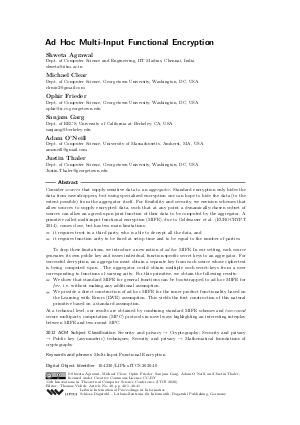LIPIcs.ITCS.2020.40.pdf
- Filesize: 0.82 MB
- 41 pages

 Creative Commons Attribution 3.0 Unported license
Creative Commons Attribution 3.0 Unported license




Feedback for Dagstuhl Publishing